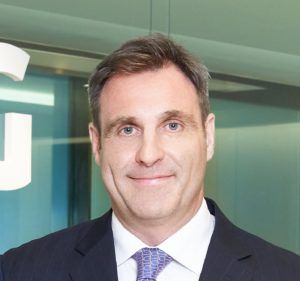
As individual investors and their advisers have been upping their exposure to alternatives over the past decade or so, private markets, in particular private equity, have moved increasingly into the spotlight.
Private equity’s appeal has been helped by its stellar returns since the global financial crisis on the back of lower financing costs and higher valuations, although this trend has sharply reversed in recent years as interest rates have risen.
Indeed, private equity firms are faced with huge amounts of dry powder after several large fundraising years in 2020 and 2021 and few opportunities for investment more recently. According to one estimate by Preqin, dry powder reached $4trn at the end of last year.
These difficulties come at a time when several private capital firms are seeking to democratise private equity investments, employing semiliquid structures, which effectively make use of liquidity sleeves comprising cash or public market investments to allow for more regular redemptions.
The concern then is that efforts to democratise private equity investment come at the worst possible time and have raised questions about whether retail investors will end up carrying the can should things turn sour.
The gating of Blackstone’s Real Estate Investment Trust just a few years ago underscored the fact that semiliquid investment vehicles do not offer the same liquidity as regular mutual funds.
Against this background, Simon Godfrey, consultant founder at Value Minds, chose the Hamilton Lane Global Private Assets and the Partners Group Global Value funds for this week’s head-to-head.
Investment approach
The Hamilton Lane strategy aims for medium- to long-term capital appreciation, sufficient diversification to avoid concentration risk and liquidity to manage redemptions. The outcome is a portfolio with around 180 investments, mostly based in the US.
The strategy invests in direct deals, secondaries and closed-end funds, although secondaries are the largest category in the portfolio at nearly half.
IT is the largest sector in the portfolio along with industrials.
Meanwhile, the Partners Group strategy takes a thematic approach by investing across four industry verticals, namely technology, health and life, goods and products, and services.
The strategy is fairly evenly split between the US and Europe, while healthcare is the largest sector followed by IT.
Unlike the Hamilton Lane strategy, secondaries account for a much smaller share of the portfolio at around 15%, while direct deals make up 68%.
Godfrey also notes that both funds keep their leverage low.
Sector allocation:
| Hamilton Lane | Partners Group | ||
| IT | 24% | n/a | n/a |
| Industrials | 24% | n/a | n/a |
| Consumer Discretionary | 15% | n/a | n/a |
| Healthcare | 15% | n/a | n/a |
| Financials | 7% | n/a | n/a |
| Materials | 7% | n/a | n/a |
| Consumer Staples | 3% | n/a | n/a |
| Communication Services | 2% | n/a | n/a |
| Real Estate | 2% | n/a | n/a |
| Energy | 1% | n/a | n/a |
Top five direct investments:
| Hamilton Lane | Partners Group | ||
| Solenis | 1.9% | PCI Pharma Services | 2.7% |
| Banner + Castle | 1.5% | DiversiTech | 2% |
| Authentic Brands Group | 1.4% | SRS Distribution | 1.9% |
| Advanz Pharma | 1.4% | Zabka Polska | 1.6% |
| Echo Global Logistics | 1.3% | Emeria | 1.5% |
Performance
Godfrey caveats his remarks about performance by underscoring the extent to which there is no real benchmark to compare private equity performance to and that valuation methodology plays a significant role.
In terms of volatility, Godfrey notes that the lack of a daily mark-to-market for these strategies means that they do not experience the wild swings that characterise public markets, making comparisons challenging.
Partners Group has published an annualised volatility figure since the inception of the strategy, which is 5.9% for the US dollar share class and while Hamilton Lane does not publish this figure, it is also estimated to be around the same mark.
Godfrey notes this compares favourably with the 10-year annualised volatility for the asset class, which sits at 8.5%.
In terms of fees, Godfrey notes that investment in both strategies are available through pooled vehicles, with fee levels comparable to those of ordinary mutual funds.
Discrete calendar year performance:
| Fund | 2023 | 2022 | 2021 | 2020 | 2019 |
| Hamilton Lane | 12.94% | 8.33% | 20.81% | 16.26% | 9.75% |
| Partners Group | 8.2% | 0.3% | 20.1% | 16.3% | 15.4% |
Manager review
Hamilton Lane comprises 690 employees who are responsible for $920bn in assets under management and supervision.
The firm employs a two-step approach, with the general investment committee reviewing and approving deals before they are reviewed by the evergreen portfolio committee.
Godfrey notes that Hamilton Lane has been late to developing evergreen strategies, although it has experienced very strong growth over the last five years.
Meanwhile, Godfrey notes that evergreen assets remain a key component of Partners Group’s approach.
The firm employs 1,9000 professionals in total and its three co-founders continue to have a role in the running of the company.
Conclusion
Godfrey notes that the two strategies are different, with Partners Group having a longer track record in evergreen assets, whereas Hamilton Lane harnesses its experience across private markets.
Godfrey also notes that Partners Group’s larger size relative to Hamilton Lane may hamper it due to the need to deploy more capital into new deals.
“As a relative newcomer, Hamilton Lane with $6-7bn in evergreen strategies, has nonetheless benefited from the huge increase in interest in alternatives from private wealth and institutions alike in the decade. It has leveraged its greater scale to deploy this capital more swiftly, with its access to both direct and secondaries,” said Godfrey.
However, Godfrey leans towards the Partners Group strategy in terms of providing diversification.
“Perhaps a more important question is to what diversification effect an investment in private assets can have on a global portfolio. Research has shown that the correlation between buyout funds and public markets has been increasing significantly in recent years, though this effect is more marked in North America compared to Europe. Therefore a strategy with a more European bias may continue to reap more diversification benefit. Isn’t that what alternatives is about?” he said.

















